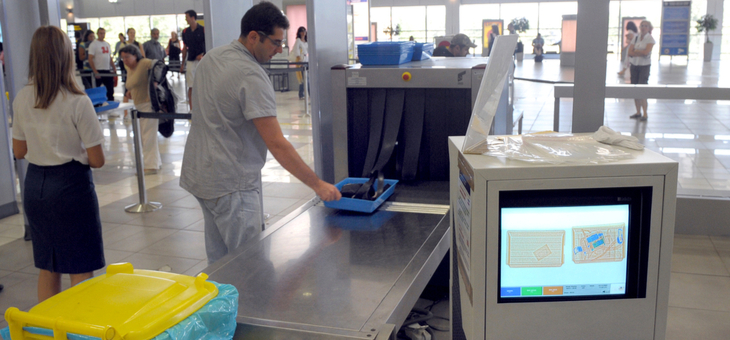Hands up who’s looking forward to travelling again?
We’ve been poring over package offers, squirrelling away spending money, dreaming of beaches and drawing up ‘must-do’ lists for our next dream destination, be it a day trip or a European blowout.
But maybe we’ve forgotten the little tricks to making sure a holiday goes smoothly. Certainly, one of the most stressful parts of a holiday can be airport security checks.
Who hasn’t silently fumed over separating their electronics from their normal hand luggage? A task that only escalates in tediousness if there is more than one in your travelling party.
But why is it necessary, and will it damage your electronics?
Read: What not to wear at airport security
As we recently shared with another ‘Jan’, electronic devices are scanned because wiring and batteries make a great cover for explosive devices and their density can also mask the presence of other dangerous items such as knives.
While this would be expected to be a recent phenomenon, the first example of electronics masquerading as a bomb was the Lockerbie disaster in 1989 when 270 people died. In that case the device was hidden in a boom box.
The good news is that while it is time consuming, airport screening will not damage your electronics. In fact, the most dangerous part of the whole process is forgetting your laptop because it is in a separate carrier basket. Several US airports now have signs at the end of security conveyor belts reminding people to check they have their electronics.
Read: 13 airport mistakes we all make
However, if you are going old school and carrying unprocessed camera film, you may be in trouble.
According to photoreview.com.au, you should never leave unprocessed film in checked-in bags as they are subject to a higher X-ray dose than hand luggage, and that will permanently damage film.
“In contrast, hand-carried luggage is initially subjected to a process that resembles a CAT scan in a hospital and uses much lower X-ray doses,” the website reveals.
“This causes very little damage to slower films – ISO 200 and below – but may affect fast films, – ISO and above.
“However, the effect builds up, so the more times a film is scanned the greater potential for it to be damaged.”
Read: How early should we get to the airport?
The website advises against placing unprocessed film under anything airport security may consider suspicious or any dense items as they might be rescanned, thus increasing the risk of damage.
It recommends carrying any unprocessed film in clear packaging and offering it to security staff for hand inspection.
If you enjoy our content, don’t keep it to yourself. Share our free eNews with your friends and encourage them to sign up.

